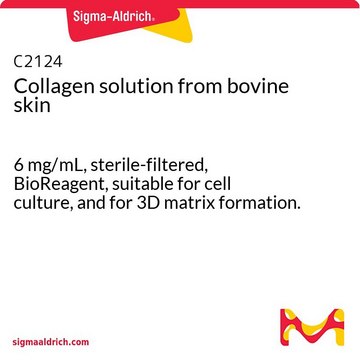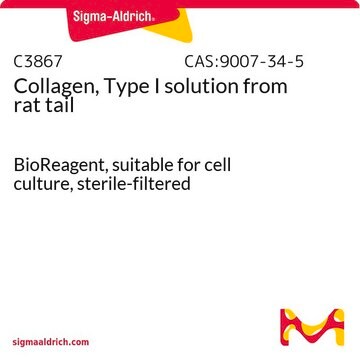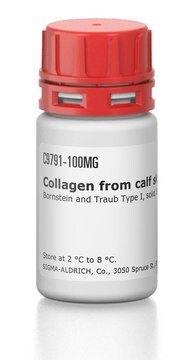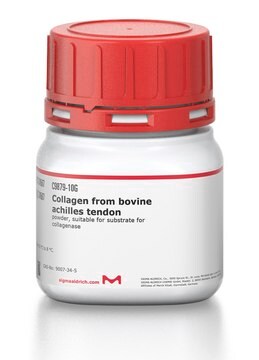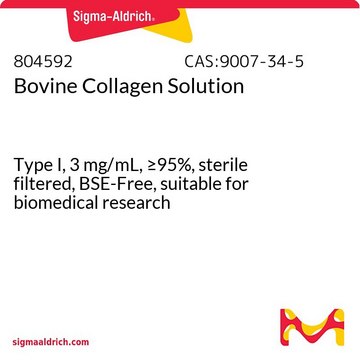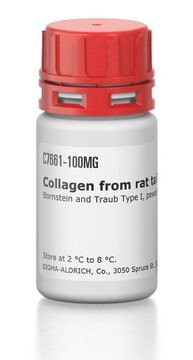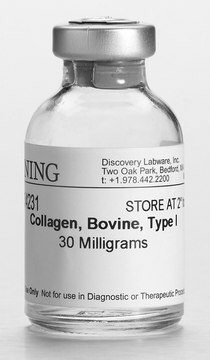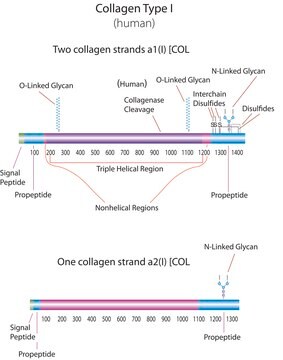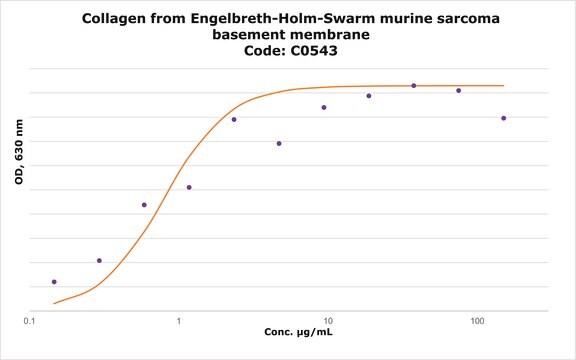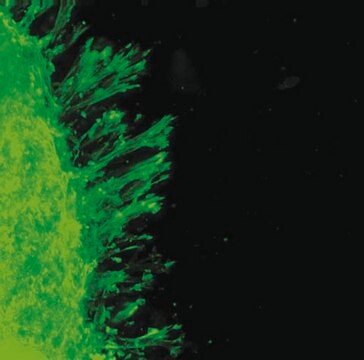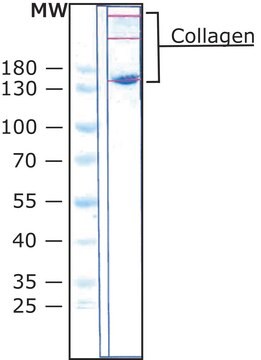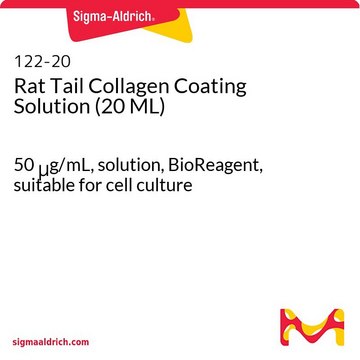C4243
Bovine Collagen Type I
from bovine skin, liquid, 2.9-3.2 mg/mL, ≥99.9% (SDS-PAGE), suitable for cell culture, used for 3D gel formation
Sinonimo/i:
Bovine collagen solution, Collagen extract
About This Item
Prodotti consigliati
Nome del prodotto
Collagen solution from bovine skin, Type I, 2.9-3.2 mg/mL, suitable for cell culture, sterile-filtered
Origine biologica
bovine skin
Livello qualitativo
Sterilità
sterile-filtered
Nome Commerciale
BioReagent
Saggio
≥99.9% (SDS-PAGE)
Stato
liquid
Confezionamento
pkg of 100 mL
pkg of 20 mL
Concentrazione
2.9-3.2 mg/mL
tecniche
cell culture | mammalian: suitable (and for 3D matrix formation)
Copertura della superficie
6‑10 μg/cm2
Compatibilità
gelation test tested
N° accesso UniProt
Specificità del legame
Peptide Source: Fibrinogen
Attività estranea
endotoxin ≤1.0 μmole/min-mg protein
Condizioni di spedizione
wet ice
Temperatura di conservazione
2-8°C
Informazioni sul gene
human ... COL1A1(282187)
Cerchi prodotti simili? Visita Guida al confronto tra prodotti
Descrizione generale
Applicazioni
- in the preparation of collagen gels.
- to coat cell culture dishes for HeLa cell line culture.
- to construct hydrogels laden for HepG2 cell culture.
Azioni biochim/fisiol
Componenti
Avvertenza
Nota sulla preparazione
Altre note
Prodotti correlati
Codice della classe di stoccaggio
12 - Non Combustible Liquids
Classe di pericolosità dell'acqua (WGK)
nwg
Punto d’infiammabilità (°F)
Not applicable
Punto d’infiammabilità (°C)
Not applicable
Dispositivi di protezione individuale
Eyeshields, Gloves, multi-purpose combination respirator cartridge (US)
Scegli una delle versioni più recenti:
Possiedi già questo prodotto?
I documenti relativi ai prodotti acquistati recentemente sono disponibili nell’Archivio dei documenti.
I clienti hanno visto anche
Articoli
Extracellular matrix proteins such as laminin, collagen, and fibronectin can be used as cell attachment substrates in cell culture.
Il team dei nostri ricercatori vanta grande esperienza in tutte le aree della ricerca quali Life Science, scienza dei materiali, sintesi chimica, cromatografia, discipline analitiche, ecc..
Contatta l'Assistenza Tecnica.